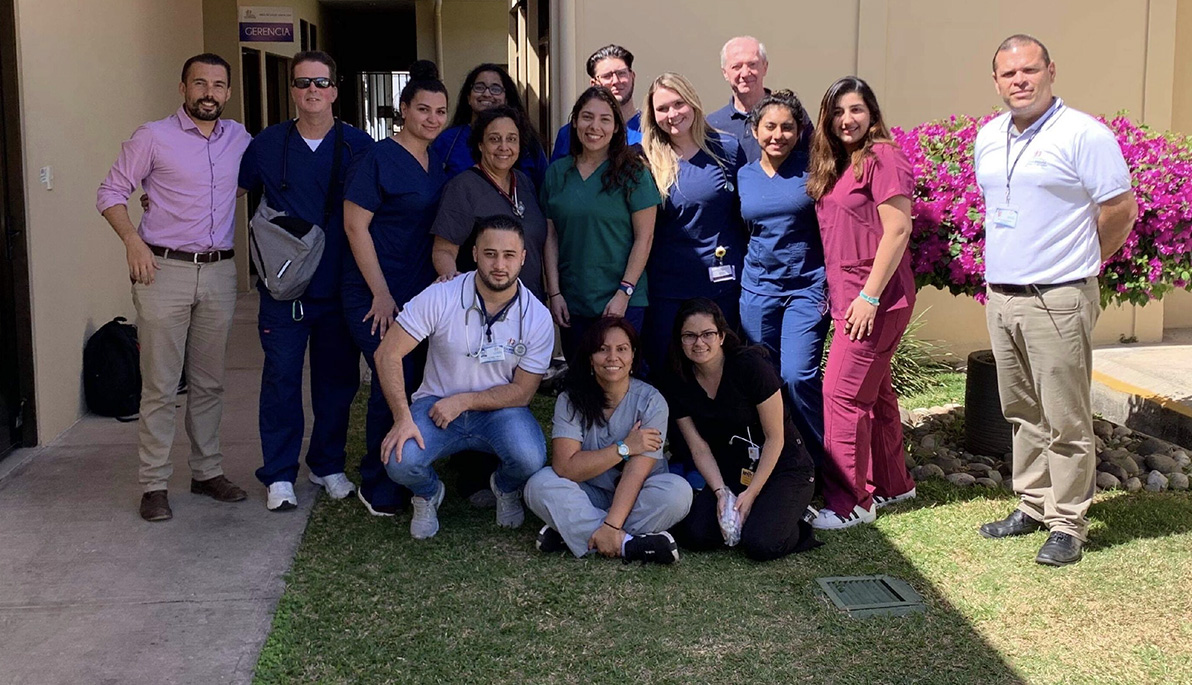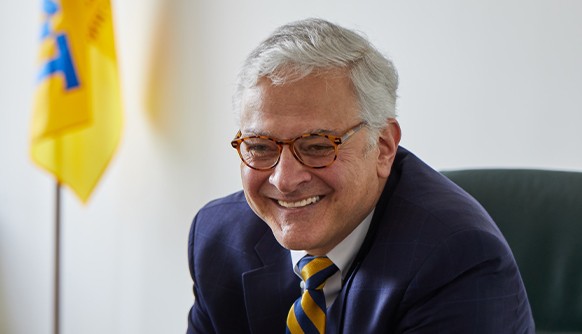News
Not Just Fun in the Sun: Health Professions Students in Paradise
January 29, 2020
Over the chilly winter break, eight students and four NYIT School of Health Professions faculty members journeyed to Costa Rica to learn why the nation has one of the most regarded healthcare systems and longest life expectancies in the world.
“Observing the Costa Rican healthcare system exposed our students to how a country, with far less resources than the United States, provides care to their communities, from the clinics to their homes,” said Zehra Ahmed, M.B.B.S., assistant professor and chair of Physician Assistant Studies. “This experience was specifically geared to observing and working with local healthcare providers.”
Costa Rica’s 4.9 million citizens not only enjoy the nation’s natural beauty, complete with picturesque rainforests and beaches, they also have access to one of the most effective primary healthcare systems. The country has both public and private healthcare sectors, with each town offering residents the opportunity to receive public preventative and primary care. The public universal healthcare system, called Caja Costarricense de Seguro Social (Costa Rican Social Security Fund), offers full coverage for all medical procedures and prescription drugs to citizens, permanent residents, and visitors for a small monthly fee based on a percentage of their income. In addition, many of the nation’s hospitals are Joint Commission International-certified and medical tourism is rapidly growing, with an estimated 40,000 people visiting Costa Rica for treatment each year.
The students saw first-hand the success of Costa Rica’s healthcare system on their visit to the Coopesana Clinic in Santa Ana. The clinic, which treats more than 300 patients daily in each of its eight locations, delivered an opportunity for New York Tech biology, health sciences, nursing, occupational therapy, and physician assistant studies students to gain valuable hands-on experience. Alongside practicing clinicians, the students observed and assisted in medical intake and assessment, radiology, hematology, nutrition education, emergency room procedures, obstetrics care, and pediatric work.
Outside the clinic, students received Spanish medical term lessons from local healthcare professionals, training that will also prove useful in their future careers. Language barriers are a challenge faced by many clinicians who treat diverse populations, and the ability to speak Spanish can lead to better communication and better care for Hispanic and Latino patients.
“It can be unsettling to a patient, and even you, when you are performing a procedure and you have no way of communicating other than body language,” said Giana Cala, a health sciences student who took part in the trip. “We were fortunate enough to participate in medical Spanish lessons, and became more comfortable with the language and medical terms. These lessons were extremely valuable, and are something we will all carry with us throughout our professional careers.”
Upon leaving Santa Ana, the group traveled to the Pacific Coast province of Guanacaste, a region where people commonly live past the age of 100 years. The area’s centenarians are known to make frequent visits to friends and neighbors and often live with their children or grandchildren who provide support, all factors that support mental health and provide a sense of purpose.
“I believe, these kinds of experiences open students’—and all participants’—minds and hearts to cultural similarities and differences,” said Ahmed. “[They] can help them become better healthcare providers to the diverse population of patients they will work with in the United States.”





